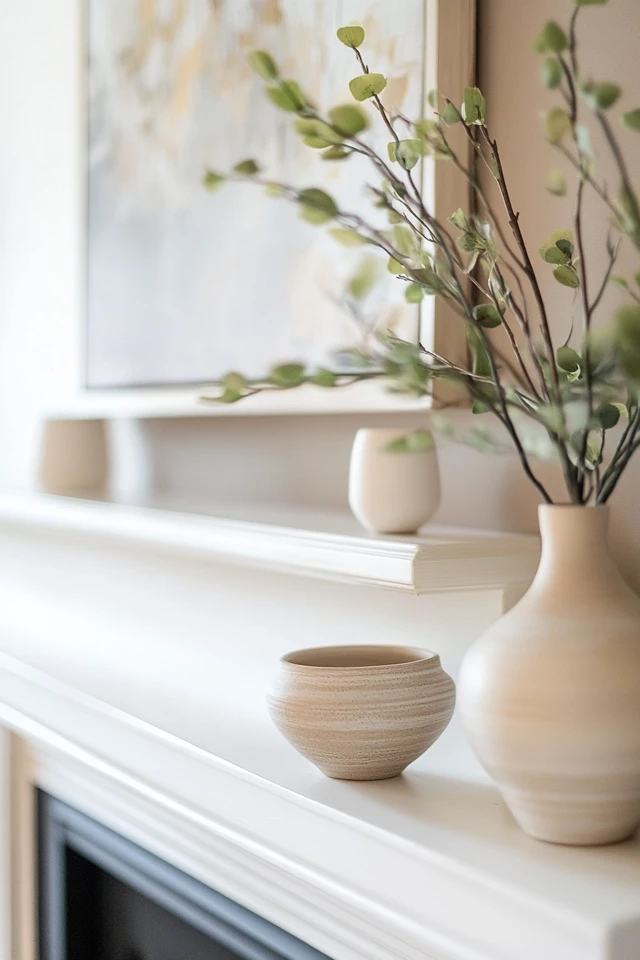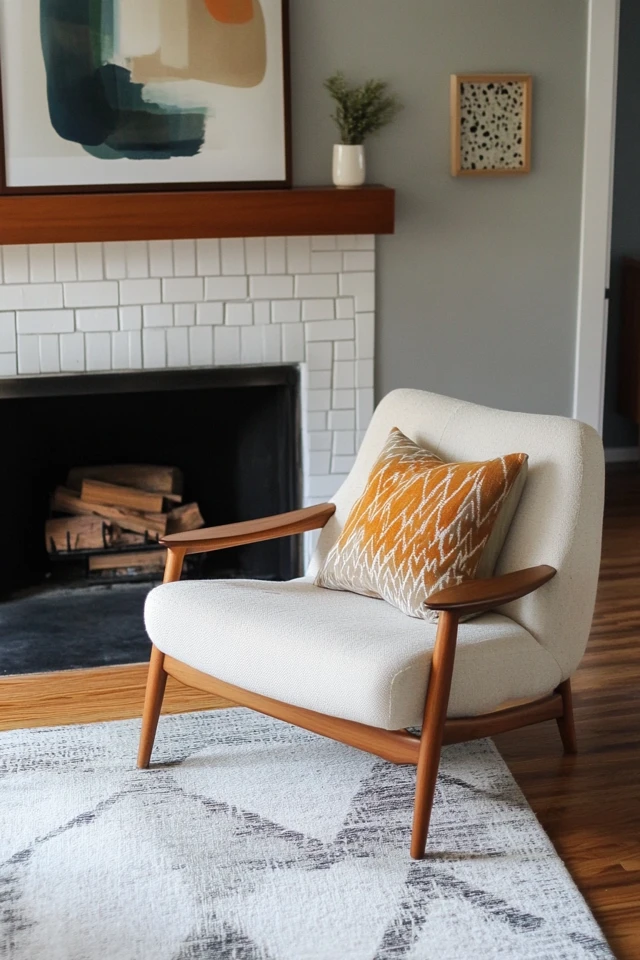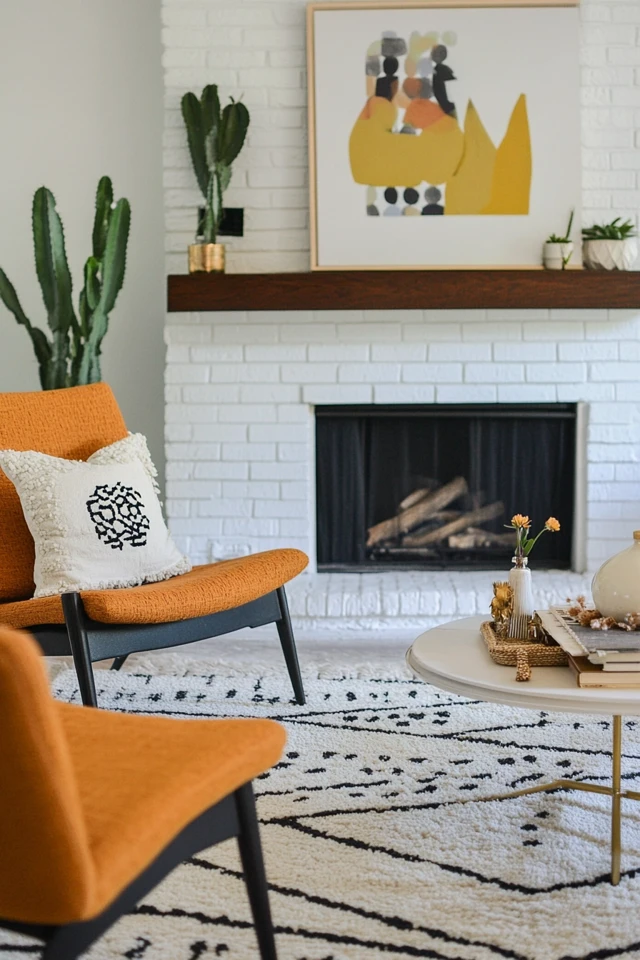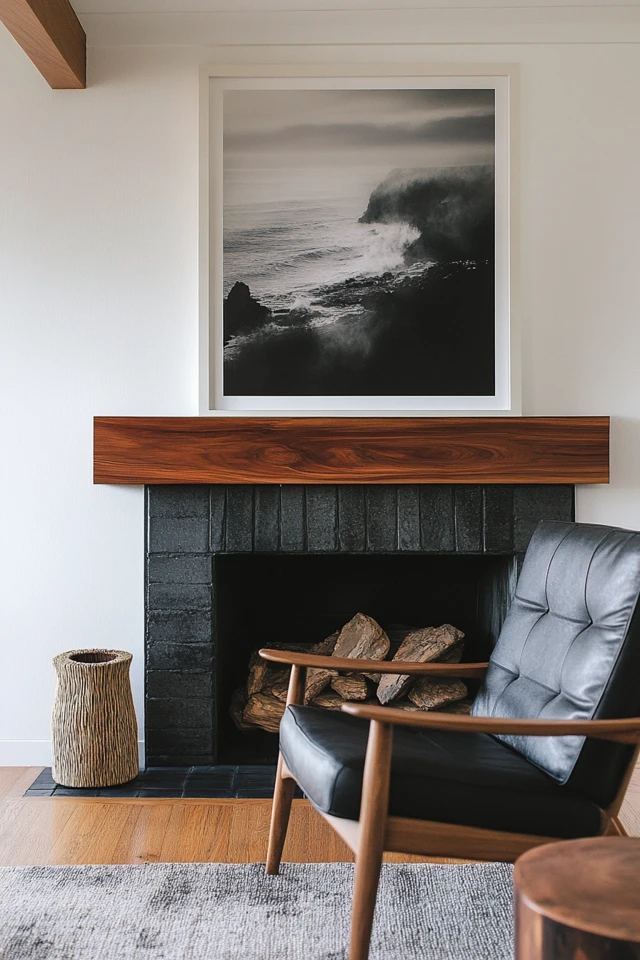Introduction
Mid-century modern design is a masterclass in balance. It’s the perfect harmony of bold statements and understated elegance, where vibrant colors coexist with neutral tones, and dramatic furniture shapes complement sleek, minimalist lines. This balance is what makes mid-century modern so timeless—it grabs your attention without overwhelming your senses.
When I first started experimenting with mid-century modern design, I leaned a little too hard on the bold side. I filled my living room with bright accent walls, patterned rugs, and statement furniture. It looked exciting, but something felt… off. That’s when I realized the magic of mid-century modern lies in restraint. Once I added softer, subtler elements—like a walnut coffee table and neutral-toned curtains—the space instantly felt more cohesive and inviting.
Balancing bold and subtle elements is all about knowing when to go big and when to pull back. In this post, I’ll walk you through the essential tips and tricks for striking that perfect balance in your mid-century modern interiors. Whether you’re designing a living room, bedroom, or entire home, these strategies will help you create a space that’s dynamic, sophisticated, and effortlessly stylish.
Why Balance Matters in Mid-Century Modern Design
1. Timeless Appeal
A balanced design ensures your space feels timeless, not trendy. The mix of bold and subtle elements keeps the room visually interesting while maintaining longevity.
2. Creates Visual Harmony
The interplay of vibrant colors and muted tones, or dramatic shapes and clean lines, prevents the space from feeling too busy or too sterile.
3. Showcases Individual Pieces
Balancing bold and subtle allows each element in your design to stand out, whether it’s a statement sofa or a simple wood sideboard.
Tips for Balancing Bold and Subtle in Mid-Century Modern Design
1. Choose One Statement Piece
When incorporating bold elements, start with one focal point per room.
- Living Room: A vibrant sofa in mustard yellow or teal can anchor the space.
- Dining Room: Opt for an eye-catching Sputnik chandelier or a colorful set of dining chairs.
- Bedroom: Make the bed a statement piece with a bold upholstered headboard.
Keep the rest of the room understated to let the focal piece shine.
2. Pair Bold Colors with Neutral Tones
Mid-century modern design thrives on color, but balance is key.
- Bold + Neutral: If you have a bright orange armchair, pair it with a neutral gray or beige sofa.
- Earthy Palette: Use warm wood tones as a grounding element to soften vibrant hues.
- Accent Walls: Paint one wall in a bold color like deep green or burnt orange while keeping the others neutral.
3. Use Patterns Strategically
Mid-century modern patterns are bold, geometric, and playful. To keep them from overwhelming the space:
- Limit Pattern Use: Stick to one or two patterned elements, like a rug or throw pillows.
- Mix Patterns Carefully: Combine patterns with a similar color palette or scale to avoid visual clutter.
- Break It Up: Balance patterned pieces with solid-colored furniture or accessories.
4. Balance Dramatic Shapes with Clean Lines
Mid-century modern is known for its sculptural furniture, but too many bold shapes can feel chaotic.
- Furniture: If you have a statement piece like an Egg Chair or Womb Chair, pair it with simpler, boxy furniture.
- Lighting: A dramatic arc floor lamp pairs beautifully with a sleek, low-profile sofa.
- Decor: Mix organic shapes, like a round coffee table, with linear pieces, like a rectangular media console.
5. Layer Textures
Texture adds depth and balance to mid-century modern spaces.
- Bold Textures: Velvet or leather upholstery makes a statement while staying refined.
- Soft Accents: Pair bold textures with softer ones, like wool throws or cotton rugs.
- Natural Materials: Use materials like wood, stone, or rattan to ground the space.
6. Play with Lighting
Lighting is an essential tool for balancing bold and subtle elements.
- Statement Fixtures: A bold Sputnik chandelier or geometric pendant light makes a strong impression.
- Ambient Lighting: Balance dramatic fixtures with softer, ambient lighting from table lamps or floor lamps.
- Natural Light: Use natural light to highlight subtle textures and neutral tones in your design.
7. Incorporate Artwork Thoughtfully
Art is an easy way to add boldness to your space, but it should complement the overall design.
- Large Statements: Hang one oversized piece of abstract art above a sofa or console table.
- Gallery Walls: For a subtler approach, curate a gallery wall with smaller pieces in a cohesive color palette.
- Frames and Matting: Use simple frames and neutral matting to tone down bold artwork.
8. Focus on Proportions
Balance isn’t just about color or texture—it’s also about scale.
- Furniture: Pair larger, bold furniture with smaller, understated pieces to avoid crowding the room.
- Decor: Use large decor items sparingly and balance them with smaller accents.
- Spacing: Leave negative space around bold elements to give the design room to breathe.
9. Add Subtle Layers Through Accessories
Accessories are where subtlety can shine in mid-century modern design.
- Vases and Bowls: Use neutral or earthy-colored ceramics to add understated charm.
- Pillows and Throws: Stick to solid colors or subtle patterns for a layered, balanced look.
- Books and Trays: Add personality with styled books and trays in muted tones.
10. Let Nature Be the Subtle Element
Natural elements like plants and wood bring softness and balance to bold mid-century modern designs.
- Plants: Use greenery to add life and break up bold furniture or patterns.
- Wood Finishes: Choose furniture with natural wood tones to ground the space.
- Stone or Concrete: Incorporate materials like stone planters or concrete coffee tables for texture and subtlety.
Picture Gallery








Tips for Getting Started
- Start small by adding one bold element to an otherwise neutral room.
- Use mood boards to test color and pattern combinations before committing.
- Don’t be afraid to edit—sometimes less is more when balancing bold and subtle.
Conclusion
Balancing bold and subtle elements in mid-century modern design is an art form, but with the right approach, it’s one that anyone can master. By thoughtfully combining vibrant colors, dramatic shapes, and understated elements, you can create a space that feels dynamic yet harmonious.
I’ve found that the best designs are the ones that don’t take themselves too seriously—where bold moments surprise and delight, and subtle details keep things grounded. Whether you’re revamping a single room or embracing mid-century modern throughout your home, remember: it’s all about balance.
So, what bold piece will you choose to anchor your space? And how will you complement it with subtle details? Whatever you decide, your design will reflect your unique style and the timeless charm of mid-century modern.
FAQ
How do I incorporate bold colors without overwhelming my space?
Start with one or two bold pieces, like a colorful sofa or accent chair, and balance them with neutral tones and natural materials.
Can I mix patterns in mid-century modern design?
Yes, but keep the color palette cohesive and avoid using too many competing patterns. Balance bold patterns with solid colors to maintain harmony.
What’s a good starting point for balancing bold and subtle elements?
Begin with a neutral foundation (walls, flooring, and larger furniture) and layer in one bold statement piece, like a vibrant rug or dramatic lighting fixture.
Are there specific colors that work best in mid-century modern design?
Earthy tones like mustard yellow, teal, burnt orange, and olive green are classic mid-century colors. Pair them with neutrals like gray, beige, or white for balance.
How do I prevent my space from feeling too busy?
Use negative space strategically, limit bold elements to one or two per room, and keep accessories simple to let the design breathe.


